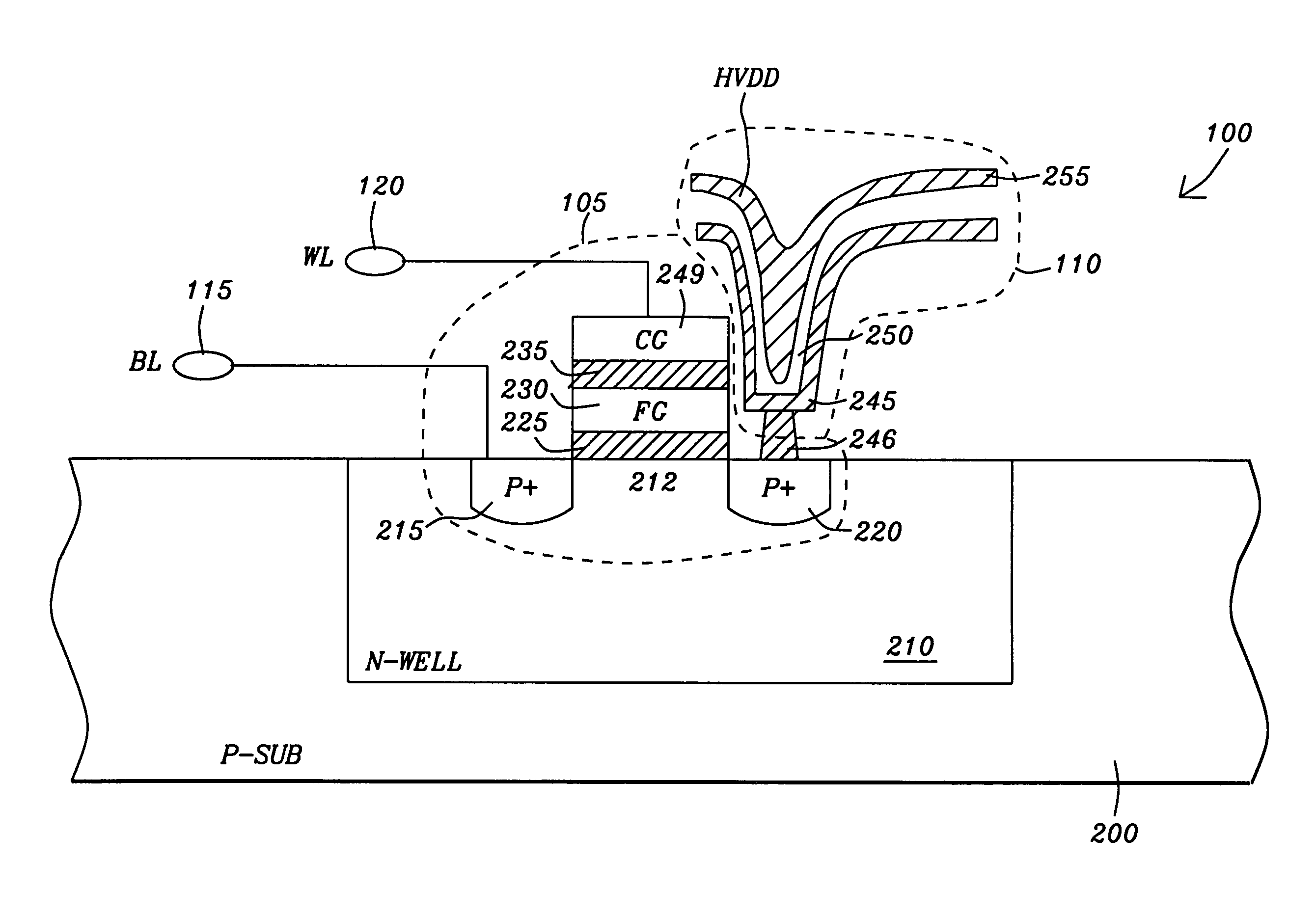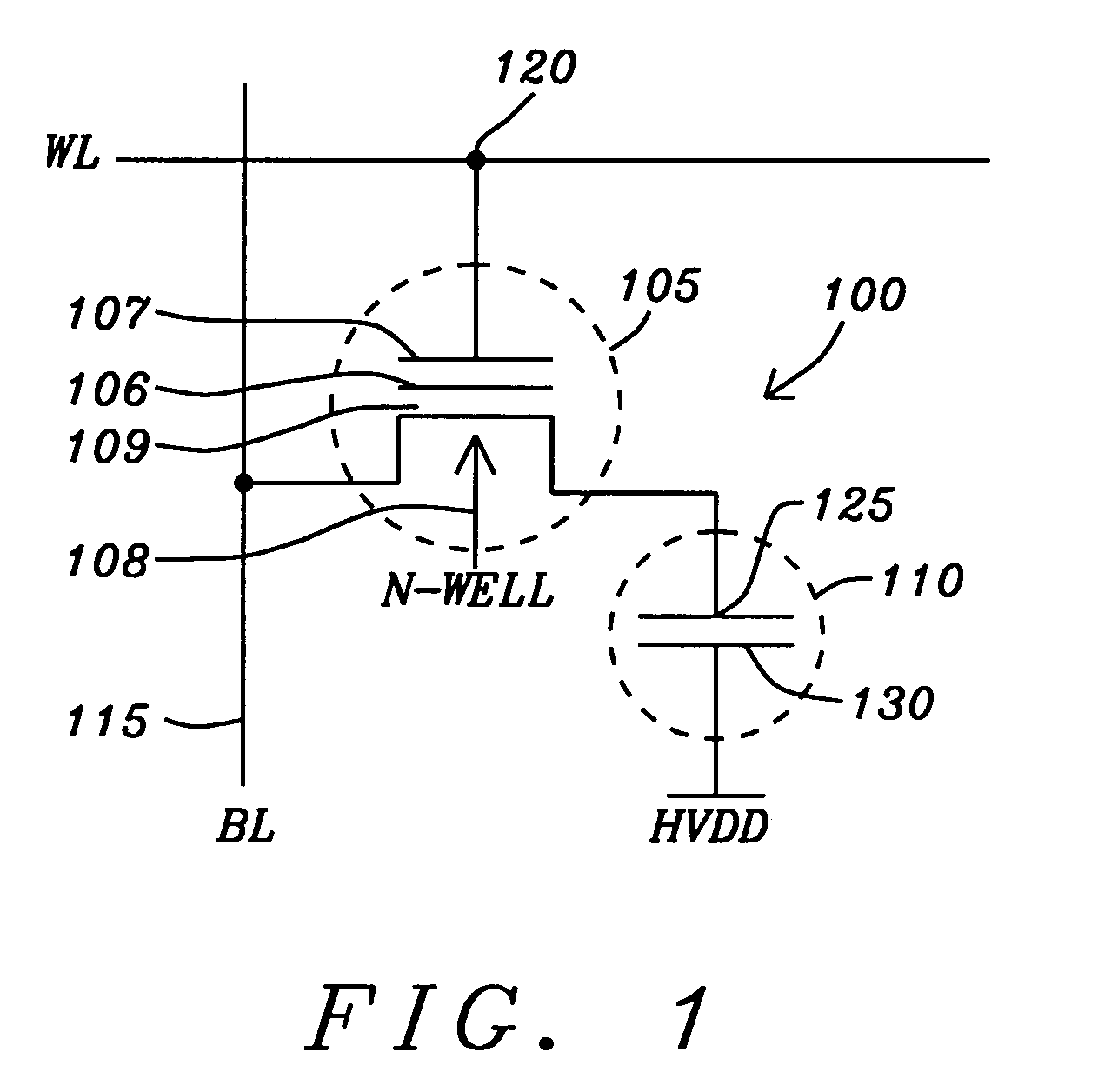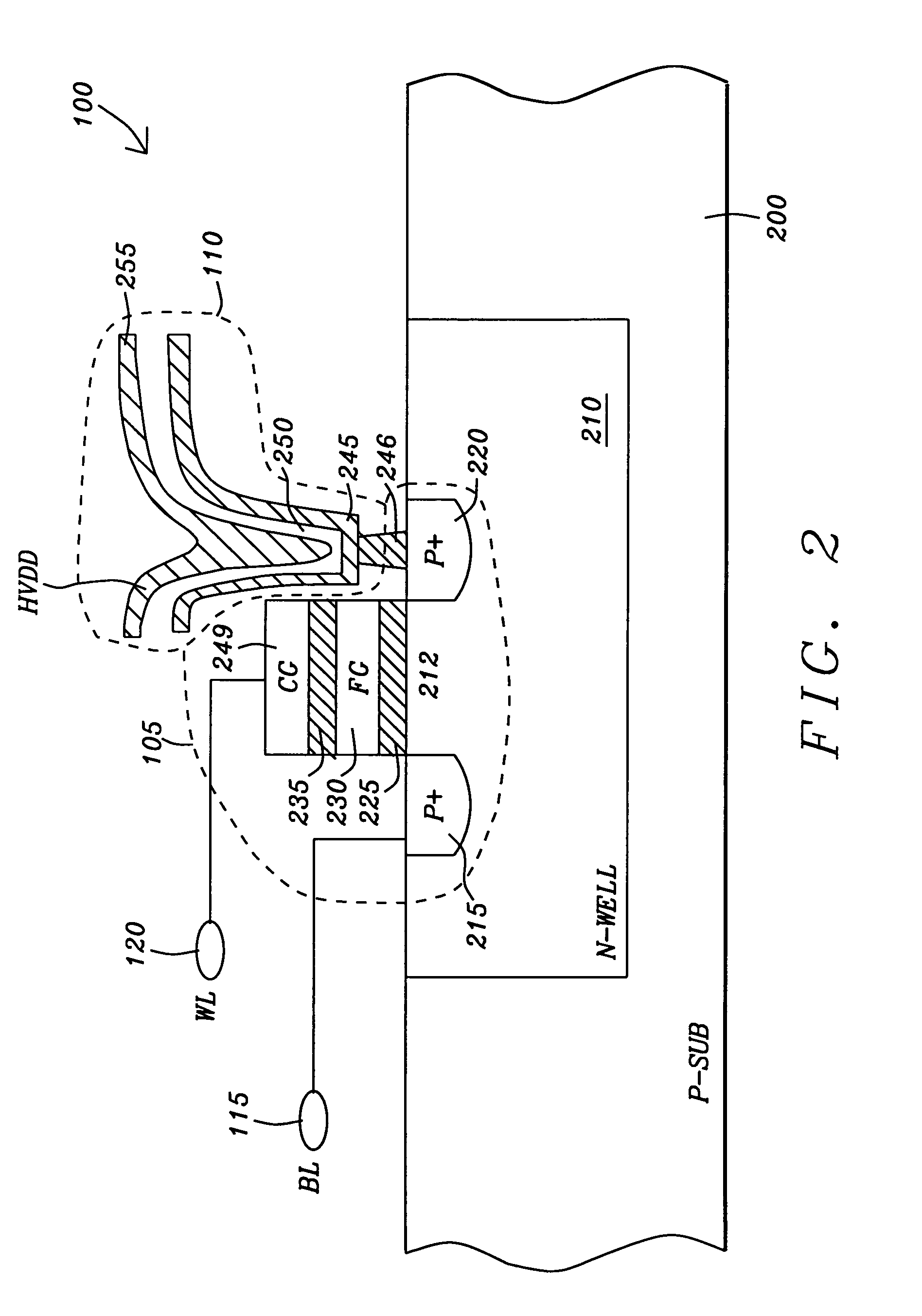Method and apparatus of operating a non-volatile DRAM
a non-volatile and memory technology, applied in static storage, digital storage, instruments, etc., can solve the problems of inability to retain data without periodic refresh process, complicated system design, etc., and achieve fast random access of volatile memory cells and fast read and write access
- Summary
- Abstract
- Description
- Claims
- Application Information
AI Technical Summary
Benefits of technology
Problems solved by technology
Method used
Image
Examples
Embodiment Construction
[0041]FIG. 1 shows the schematic of a non-volatile DRAM cell 100 in the present embodiment. It includes a pass-gate transistor 105 and a cell capacitor 110 to provide fast read or write access in the DRAM operating mode and in the NVM operating mode. The non-volatile DRAM cell 100 is arranged similar to a DRAM cell with the drain of the pass-gate transistor 105 connecting to a bit line 115, the source connecting to the bottom plate 125 of the cell capacitor 110 and the control gate connecting to a word line 120. The top capacitor plate 130 is connected to a common-plate node coupled to a voltage source HVDD with a voltage approximately equal to one half of the voltage level of the power supply voltage (VDD / 2). The pass-gate transistor 105 functions as the selection transistor and the cell capacitor 110 provides temporary charge storage when the non-volatile DRAM cell 100 is operating in the DRAM mode. The pass-gate transistor 105 contains a floating gate 106 and a control gate 107. ...
PUM
 Login to View More
Login to View More Abstract
Description
Claims
Application Information
 Login to View More
Login to View More - R&D
- Intellectual Property
- Life Sciences
- Materials
- Tech Scout
- Unparalleled Data Quality
- Higher Quality Content
- 60% Fewer Hallucinations
Browse by: Latest US Patents, China's latest patents, Technical Efficacy Thesaurus, Application Domain, Technology Topic, Popular Technical Reports.
© 2025 PatSnap. All rights reserved.Legal|Privacy policy|Modern Slavery Act Transparency Statement|Sitemap|About US| Contact US: help@patsnap.com



